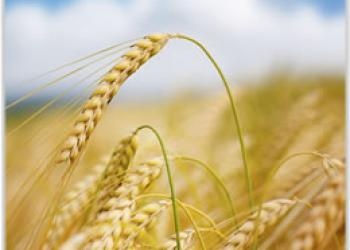God's Feasts Answer the Big Questions - Part 2

What is man's destiny? How do we reach it? What is the future of our planet?
In the April-June issue, we saw how the first three of God's feasts revealed in the Bible (Passover, the Days of Unleavened Bread and Pentecost) began answering these questions. We learned that God's plan involves giving each of us the opportunity to become part of His spiritual family (Hebrews 2:10).
Now we turn our attention to the remainder of God's feasts listed in Leviticus 23—those that come in late summer and autumn in conjunction with the end of a great harvest period in the land of Israel.
The Feast of Trumpets
The fourth feast is described as "a memorial of blowing of trumpets" (Leviticus 23:24). In ancient times, trumpets were used to announce things—to crown a king, to call people to an assembly and to serve as an alarm for war.
Jesus in His Olivet Prophecy, the lengthy prophecy He gave on the Mount of Olives shortly before His death and resurrection, stated that when He returns, a great trumpet will sound as His angels gather the saints (Matthew 24:30-31). Paul adds that the saints who have died will be resurrected to immortality "at the last trumpet" (1 Corinthians 15:51-53). In Revelation 8, we're introduced to seven angels with trumpets, each heralding global calamity. And when the seventh blows his trumpet, Christ's return as conquering King will be announced (Revelation 11:15).
The Day of Atonement
The next of God's appointed times, the Day of Atonement, is a day to "afflict" ourselves (Leviticus 23:27)—referring to fasting (Psalm 69:10; Isaiah 58:3, 5), through which we draw nearer to God. It was observed in the Old Testament by the presentation of two goats—one, representing the Lord, slain as a sin offering and the other driven off to bear away sin in banishment (Leviticus 16).
Returning to the panorama of end-time events, armies will attempt to fight against Christ at His return, but they will be utterly defeated (Revelation 17:14). The leading civil and religious figures at that time, called "the beast" and "the false prophet" respectively, will also be captured and consumed in fire (Revelation 19:20). The next thing that happens is that Satan, the spirit power behind those human leaders, is bound so he can no longer deceive human beings while the saints live and reign with Jesus Christ (Revelation 20:1-4). With this deceiving spirit removed, all people will be able to come to God and develop a personal relationship with Him to be "at one" with or reconciled to Him.
The Old Testament goat of banishment represented the coming banishment of Satan. And in that future time, the nations, beginning with Israel, will at last accept the sin offering of Jesus Christ as atonement for their sins.
The Feast of Tabernacles
The next festival is the seven-day Feast of Tabernacles, observed by living in temporary dwellings. Also called the "Feast of Ingathering" (Exodus 23:16; 34:22), it celebrated the abundance of the great later harvest in Israel's agricultural year.
This Feast represents a new age of great blessing, when God through Christ will again dwell on the earth with human beings. With the deceiver gone, all nations will be drawn to God and Jerusalem to learn from Him. Nations will convert their military hardware to peaceful uses and war will cease (Isaiah 2:2-4). Isaiah 11:6-9 describes a beautiful time when the nature of animals will be changed back to what it was like in the Garden of Eden.
At this time deserts will become fruitful (Isaiah 35:1-2), and the knowledge of God will fill the whole earth (Isaiah 11:9). The scene will be set for a huge spiritual harvest or ingathering of human beings into God's family.
The Eighth Day
The seven-day Feast of Tabernacles is followed immediately by an "eighth day"—a separate and distinct festival though obviously related to the previous seven days. This eighth day, now often called the Last Great Day, continues the celebration of the end-time harvest, but represents its culmination, when all humanity will at last worship the Lord.
Consider the billions who lived in prior ages when they were deceived by Satan. What will happen to people who have never even heard of Jesus Christ? Acts 4:12 states that the only name under heaven by which people may be saved is that of Jesus Christ. Would God just forget all those billions of potential children? No!
While the firstfruits of this age are raised to eternal life at the blowing of the last trumpet, Revelation 20:5 tells us "the rest of the dead" (those who died in deception) will come back to life after the thousand-year period. Verse 12 describes them standing before a great white throne with books (Greek biblia, from which we get the word "Bible") opened to them and another book opened called the Book of Life.
This book was closed in their prior life, but is now open—they will now be given their first chance to have their names written in that book. They will be granted time to live once again as human beings (Ezekiel 37) and will be judged by how they live according to God's laws at that time. This will be the ultimate harvest opportunity for eternal life in the family of God.
For more on how the biblical festivals present the progressive steps in God's awesome plan of salvation, download or request our free booklet God's Holy Day Plan: The Promise of Hope for All Mankind. VT
